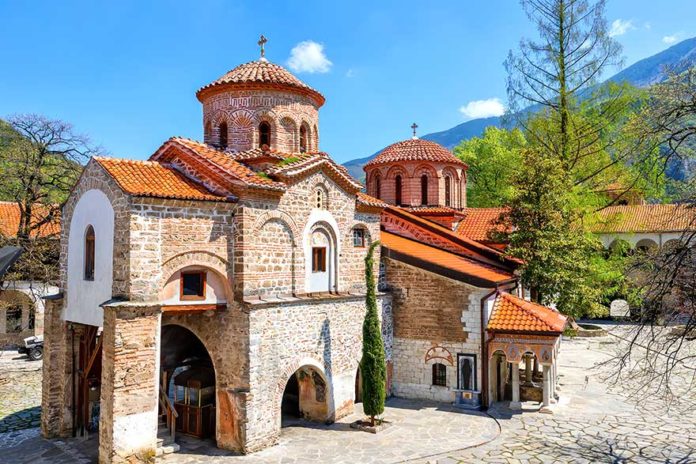Georgian-origin Byzantine commander Gregory Bakuriani founded the Bachkovo Monastery in 1083. It’s the second-largest in Bulgaria and one of three Stavropegial monasteries. The monastery was central to Georgian monasticism and maintained its character until the late 12th century. The Petritsoni literary school connected medieval Georgia with the Byzantine Empire.
A Turbulent History
Starting in the 13th century, the monastery’s location alternated between the Byzantine and Bulgarian empires. In 1344, during the Byzantine Civil War, Anna Savoy ceded the monastery to Bulgarian Tsar Ivan Alexander. He renovated it and remained its patron until the Ottoman Turks captured it in 1364. After the Tarnovo Kingdom fell in 1393, Patriarch Evtimiy’s relics were held at the monastery until the 19th century.
Renovations and Expansion
In the late 16th and early 17th centuries, the monastery underwent renovations. The St. Virgin Mary church and southern wing were built. In the 1830s and 1840s, the Cholakov brothers funded further expansion, including constructing the St. Nicholas Church, featuring murals by Bulgarian painter Zahari Zograph.
Artistic Treasures
The monastery was known for its unique applied art pieces during the 16th and 17th centuries. Its rich collection includes the Water Blessing Cup of 1735, the enamel-decorated donation box, and the 18th-century icon cover of the St. Virgin Mary.
Spiritual Significance
In the 19th century, the monastery became the region’s most influential spiritual center and was the resting place of Exarch Stefan and Patriarch Cyril.
Bachkovo Monastery, Throughout the Centuries
In 1083, Gregory Bakuriani, a Georgian military commander, and his brother Abaz founded Bachkovo Monastery. During the 12th and 13th centuries, the monastery flourished as a prominent religious and cultural center. By 1344, the Hesychast movement in Bulgaria started at Bachkovo Monastery, guided by Patriarch Evtimiy of Turnovo. Unfortunately, in 1393, Ottoman Turks attacked and partially destroyed the monastery, initiating a period of decline.
However, between the 15th and 16th centuries, the monastery was restored and regained its significance as a vital center for literature and art. In the 17th century, the monastery’s main church underwent reconstruction, and an anonymous artist painted its murals in 1603. In 1834, a devastating fire razed several buildings, but with the local community’s support, the monastery was rebuilt shortly afterward. 1865, the monastery’s refectory was reconstructed, featuring frescoes painted by Zahari Zograf, a renowned Bulgarian artist.
Throughout the 20th century, Bachkovo Monastery withstood both World Wars and the Communist regime, preserving its religious and cultural importance. In 1984, it was recognized as a UNESCO World Heritage Site. Despite experiencing prosperity and decline over its long history, Bachkovo Monastery has consistently remained a vital spiritual and cultural hub in Bulgaria.
Visiting Bachkovo Today
The St. Virgin Mary church, built in 1604, showcases a 17th-century iconostasis and murals from 1643 and 1850. The monastery is located in Bachkovo village, 7 km from Asenovgrad and 25 km from Plovdiv, making it an excellent destination for families.
Embark on a journey through time and spirituality by discovering Bulgaria’s rich monastery heritage.



